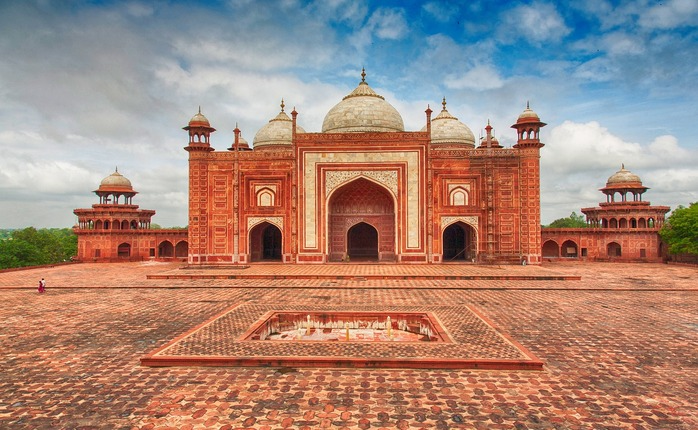Top 10 Historical Monuments in Delhi You Must Visit
16 sep, 2024

Overview
India's capital city, Delhi, is a mash-up of cutting-edge modern innovations, vibrant culture, and ancient history. The city is home to a vast array of historical landmarks from the Mughal, British, and modern Indian eras, all of which reflect the city's rich heritage. These are the top 10 historical sites in Delhi that you simply must see if you're going to be exploring the city's amazing past.
1. The Red Fort, an emblem of Indian sovereignty
The magnificence of the Mughal era is demonstrated by the Red Fort (Lal Qila). Constructed in 1648 by Emperor Shah Jahan, this recognizable red sandstone fort functioned as the Mughal rulers' primary residence for almost two centuries.
2. Qutub Minar: An Immense Wonder
At seventy-three meters, the Qutub Minar is the world's tallest brick minaret. This UNESCO World Heritage Site, constructed in 1193 by Qutb-ud-din Aibak, commemorates the start of Muslim sovereignty in India.
3. The Tomb of Humayun What Inspired the Taj Mahal
One of the most exquisite examples of Mughal architecture is Humayun's Tomb, which was commissioned in 1570 by Humayun's widow, Empress Bega Begum. The Taj Mahal was inspired in its construction by the monument's opulent architecture, which bore Persian influences.
4. India Gate: A Memorial to the Fallen Troops
India Gate, a war memorial and well-known landmark in the center of Delhi, was constructed in 1931 as a tribute to the Indian troops who lost their lives in World War I. Architecture: This 42-meter-tall arch, which is flanked by lush green grass, was designed by Sir Edwin Lutyens and is located on the Rajpath. Must-See: In remembrance of the soldiers who gave their lives in defense of the nation, the Amar Jawan Jyoti flame burns always beneath the arch.
5. Largest Mosque in India: Jama Masjid
Constructed by Shah Jahan between 1644 and 1656, the Jama Masjid is India's largest mosque and a stunning example of Islamic building design. Capacity: At any given moment, the mosque can hold around 25,000 worshippers. Architecture: Constructed of red sandstone and white marble, the mosque has two 40-meter-tall minarets, four towers, and three magnificent gates.
Lotus Temple: A Contemporary Wonder
One of Delhi's most notable instances of contemporary architecture is the Lotus Temple, which was constructed in 1986. It is a House of Worship for Bahá'ís, welcoming worshippers from all faiths. Architecture: With its three clusters of 27 marble-clad petals, the temple's design is modeled after a lotus flower. Must-See: The tranquil atmosphere and the grounds around provide a restful escape from the bustle of the city.
The Presidential Palace, Rashtrapati Bhavan
The official palace of the President of India, Rashtrapati Bhavan, is a magnificent specimen of British colonial architecture. It was constructed in the 1920s to serve as the Viceroy of India's home. Architecture: Sir Edwin Lutyens combined European and Mughal architectural elements to create the palace.
8. Purana Qila: The Old Fort of Delhi
One of Delhi's oldest forts, Purana Qila, or the Old Fort, dates to the era of Humayun and Sher Shah Suri. The fort's imposing walls and exquisite gates are well-known. Highlights: Sher Mandal, a library and observatory where Humayun is supposed to have met his death, and the Qila-i-Kuhna Mosque are also located within the fort.
9. The final Mughal Garden Tomb, Safdarjung Tombi
Built in 1754, Delhi's only surviving example of a Mughal garden mausoleum is the mausoleum of Safdarjung. Nawab Safdarjung, the influential Mughal Prime Minister under Ahmad Shah Bahadur's rule, is honored in this tomb.
10. Agrasen ki Baoli: A Stepwell from History
Agrasen ki Baoli, an ancient stepwell thought to have been built in the fourteenth century, is situated close to Connaught Place in the center of Delhi. Though not as well-known as other sites, this unusual building is a real treasure.
In summary
India's rich cultural and architectural legacy may be seen in the historical monuments of Delhi. The city offers a timeless voyage through centuries of history, whether you are exploring the magnificent Red Fort, soaking in the delicate beauty of Humayun's Tomb, or just spending some time in silence at the Lotus Temple. Make sure to see these ten must-see monuments in Delhi to get the full taste of its history.


